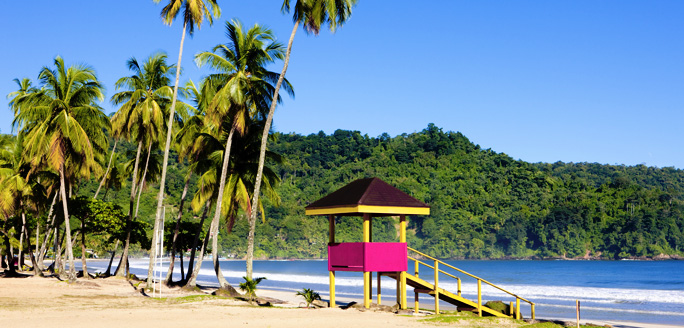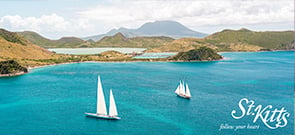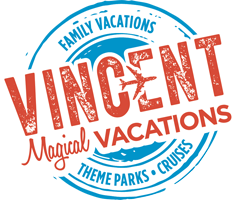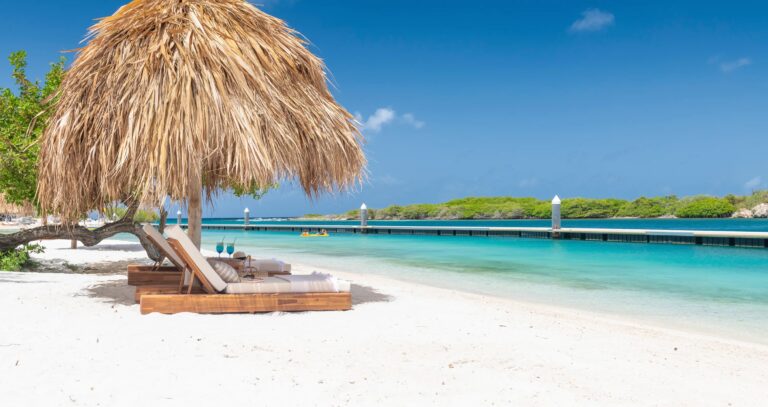We recognize that Disney vacations are not just an investment, but often the highlights of our lives, and we take that responsibility seriously. We want to ensure you have the best vacation experience.
Interested in a job in travel? Click here to learn: How to Become a Disney Travel Agent
Overview
Introduction

Trinidad is alluring, a constant surprise to first-time guests, but it's not just another carbon-copy paradise. Culturally diverse, the island is a bouillabaisse of more than 40 nationalities and ethnic groups, the largest of which are of East Indian and African descent (each accounting for about 40% of the population). The medley is reflected in everything from food, design and language to music, dance and humor.
At Carnival time, Trinidad throws the grandest, wildest party in the Caribbean. Divali, the Hindu festival of lights in October, draws big crowds, as do many other festivities throughout the year associated with Trinidad's various cultural and religious groups.
Must See or Do
Sights—The subaqueous marvels of Pitch Lake; snorkeling in Dragon's Mouth; the scarlet ibis at Caroni Bird Sanctuary; bird-watching at Asa Wright Nature Reserve; Carnival.
Memorable Meals—Shark-and-bake at one of the waterfront eateries along Maracas Beach; roti from Patraj Roti Shop; rum punch on any beach at sunset; tea at Mount St. Benedict Monastery.
Walks—A stroll along the beach at Maracas Bay; nature trails in the hills behind Pax Guesthouse at Mount St. Benedict Monastery; a hike through the Northern Range or on one of the Asa Wright Nature Centre's trails; a visit to Queen's Park Savannah or the Botanical Gardens in Port of Spain.
Late Night—Dancing to steel drums or calypso music at Mas Camp Pub, Zen Entertainment Center or Jenny's on the Boulevard.
Location
Port of Spain, the capital city and main port, is on the western coast of Trinidad, overlooking the Gulf of Paria. The Cruise Ship Complex is on the south side of the city. It houses the Customs Hall, a slew of souvenir and clothing stores, a bookstore, restaurants and a tourist-information office. Phone 868-627-4477.
Most ships tether at the pier, where passengers are greeted by locals wearing Carnival attire and playing steel drums. Outside the terminal is a crafts market. The city center is just a few minutes' walk away, through the financial district.
The terminal's tourist-information office adjusts its hours to accommodate arriving cruise-ship passengers. The main office in Port of Spain, at 51-55 Frederick St., is open daily 8 am-4:30 pm. Phone 868-624-1403.
A quick 15 minutes from downtown Port of Spain is the 14,500-acre/5,867-hectare Chaguaramas Peninsula, home to the Caribbean's most-protected private-yacht harbor and a bonanza of ecological delights. Numerous marinas fill the Chaguaramas waterfront and provide a full range of marine repairs and construction services at competitive prices, along with supermarkets, restaurants, banks, shops, rental agencies, marine radio services, hotels and self-contained apartments—all within walking distance of the marinas. Because Trinidad lies south of the traditional hurricane belt, insurance companies consider Chaguaramas one of the few safe harbors in the Caribbean.
Shore Excursions
Typical excursions may take you for a scenic ride through the northern mountain range, on a cultural tour, sportfishing or to a nature sanctuary. Check with your travel agent for additional information.
Overview
Introduction
Trinidad, Colorado, located 175 mi/280 km south of Denver, has a well-maintained historic district of Victorian and southwestern architecture. Fisher's Peak, rising 9,655 ft/2,943 m above the city, once guided wagon trains from the Santa Fe Trail to Trinidad.
That era and others are examined by the Trinidad History Museum, which includes several separate sites. The Santa Fe Trail Museum has artifacts related to the important Southwest trade route as well as items from the town's later history. The Trinidad History Museum also operates the Baca House and Bloom Mansion, next-door neighbors that both date to the late 1800s.
The A.R. Mitchell Memorial Museum and Gallery lies in the center of the historic district. The museum features paintings, collections of Old West memorabilia, Native American artifacts and Hispanic folk art.
The Scenic Highway of Legends (Highway 12) forms a breathtaking 120-mi/195-km loop from Trinidad over 10,000-ft/3,050-m Cuchara Pass and through San Isabel National Forest.
Overview
Introduction
The jewel in the crown of Cuba's colonial cities, Trinidad—a hill town 180 mi/290 km southeast of Havana—is one of Cuba's seven original towns, founded in 1514, and its red-tile roofs and cobblestoned streets are a must for visitors to see. Magnificent examples of architecture from the 1600s-1800s still stand (it's a UNESCO World Heritage city), and the streets in the restored early-colonial setting are closed to traffic. The majority of buildings are painted in tropical ice-cream colors. The atmosphere is fabulous—a time warp casting visitors back several hundred years.
Trinidad has a lot packed into a relatively small place—a surprising number of excellent museums, including the Museo Romantico (decorative arts; phone 53-4199-4363), the Museo de Arquitectura (colonial architecture; phone 53-4199-3208), and the Museo de Arqueologia (archaeology and natural science), all housed in former colonial mansions around the main square, Plaza Mayor. The cathedral is also on the square.
You will want at least two days there to immerse yourself in and savor the relaxed yesteryear lifestyle. The town is a center for the Santeria religion, and visits to a babalawo can be arranged. Catholic ceremonies are also more numerous there than elsewhere in the country; Easter is a great time to visit.
Those who stay overnight can choose from the large resort hotels on the delightful beach south of town. The local casa particular (private room rental) industry has flourished; Trinidad now boasts more than 500. If you wish, you might lodge in a colonial mansion filled with antiques, but it pays to shop around, as standards vary widely.
A short distance outside of town in the exquisite Valle de los Ingenios (Sugar Mills Valley). A good way to arrive is via a suburban rail service from Trinidad or—if the creaky and cranky old train is in service—on a touristy steam train.
In the Escambray Mountains north of Trinidad, in the spa resort of Topes de Collantes, is a massive sanatorium. More appealing, the area also has dense rain forest for those seeking wilderness: Trails lead to waterfalls (organized excursions are offered from Trinidad and from Topes de Collantes).
Nearby Playa Ancon is the perfect place to spend a day or more relaxing on the white sand beach or enjoying a snorkeling or scuba diving excursion—the offshore coral reefs are in superb condition.
Overview
Introduction

You remember the saying about taking life's lemons and making lemonade? The people of Trinidad went one better: They took old oil drums and created a unique style of music that has become the soundtrack to tropical relaxation.
Steel drums—made from the bottoms of oil barrels—were first heard in Port of Spain in the 1930s. The instrument says much about the people of Trinidad: They're resourceful, drawn to lively music and willing to use whatever's available to get a party started. In fact, it's said that the steel drum (also called a pan) was born when poor Trinidadians needed a musical instrument for Carnival, the festival of frantic revelry that is another of the island's claims to fame.
By contrast, Tobago, the other island in this Caribbean nation, is more like the dreamy picture that comes to mind when you hear a steel drum: swaying palms and fishing villages, sandy beaches and azure seas teeming with fish. The island moves at a more leisurely tempo than Trinidad, but with this kind of unspoiled scenery and uncrowded atmosphere, it's a slow dance that no one is in a hurry to end.
In addition to the usual offerings of beaches and watersports, both islands have stretches of tropical rain forest and nature preserves—seeing a scarlet ibis in the wild is a particularly wonderful experience. So much variety makes Trinidad and Tobago a good destination for those who want to sample a lot of the Caribbean in a small space. Trinidad also has a melange of racial contributors, so much so that they consider themselves the original Rainbow Nation.
Geography
Trinidad and Tobago are the last links in the Lesser Antilles island chain before it bumps into South America. The rich dynamics of an area where the confluence of the cool Atlantic Ocean mixes with both the effluent waters of the Orinoco River of South America and the warmer Caribbean creates an unusual marine bounty for visitors.
The southern tip of Trinidad sits just 7 mi/11 km from the coast of Venezuela. The northern third of Trinidad contains mountains known as the Northern Range, which include the island's highest peak, Cerro del Aripo (3,085 ft/941 m). The center and south of the island are relatively flat, consisting of fertile plains that give way to mangrove swamps and beaches at the coast.
Tobago, 21 mi/32 km northeast of Trinidad and considerably smaller in size, is dominated by rain-forested hills in the center of the island, with sandy beaches and lush jungles forming its perimeter.
History
Trinidad became the first inhabited island in the Caribbean when Mesolithic Indians made the 7-mi/11-km crossing from the South American mainland in about 5000 BC. Various Amerindian tribes followed, and in the first years AD, their population moved up through the Western Antilles all the way to Puerto Rico. When Columbus arrived at Trinidad and Tobago in 1498 on his third visit to the New World, the native population was nearly 35,000.
He named Trinidad after the Holy Trinity, which he saw represented by three peaks on the southern coast. The island was settled by the Spanish, but the colony struggled until Spain granted land to Roman Catholics from other Caribbean islands. As a result, many French planters came to the island and brought with them large numbers of slaves. In 1797, the British invaded and the island became a British holding. When Britain banned the slave trade, indentured workers from India were brought to the island to work the sugarcane plantations.
Tobago was little more than a pirate haunt until sugarcane and coffee were planted in its rich soil. The island changed hands many times before it became a British Crown colony in 1877. It united politically with Trinidad in 1888. The islands became an independent nation in 1962 and a republic in 1976.
Oil made Trinidad and Tobago one of the richest nations in the Caribbean by the 1970s, but a fall in oil prices led to difficult economic—and political—times. Expansion of the natural-gas industry in the 1990s strengthened the economy, and Trinidad and Tobago is once again in the midst of an oil-fueled economic boom.
In 1995, Trinidad elected its first prime minister of East Indian descent, an event that focused attention on the racially based political divisions in Trinidad and Tobago. Drug-related crimes are another problem facing the country: Its proximity to South America has made it a transshipment point for cocaine intended for North America.
Although British influence is still present, most obviously in the islanders' love for cricket, other nationalities are more visible today: The descendants of African slaves and indentured laborers from India now make up Trinidad's two largest ethnic groups. Those of Chinese, Middle Eastern and European descent are present in smaller numbers. In comparison, Tobago's people are quite homogenous, most tracing their heritage to Africa.
Snapshot
The islands' main attractions are charming people, rhythmic music, Carnival celebrations, empty beaches, colorful shopping, market-fresh food, underwater caves and reefs, Hindu temples, bird sanctuaries, watersports and relaxation.
If you like festivities and partying—especially Carnival—you'll like Trinidad, particularly the exciting nightlife of Port of Spain. If you're looking for seclusion and peace on a beautiful beach in a lush, tropical paradise, then Tobago is for you. Travelers put off by the noise and commotion of a large urban center should avoid Port of Spain, and those primarily interested in a beach vacation might prefer the already established beach culture of Tobago (although Trinidad is improving dramatically of late).
Potpourri
Trinidad was once part of the South American continent. For this reason, it has plants and wildlife not found on other Caribbean islands and, together with the many Caribbean species present there, accounts for the richest flora and fauna of any set of islands in the entire Caribbean.
Buccoo is the goat-racing capital of the world. Started by an Englishman in 1925, the current race has a beautiful facility built beyond the beach at Buccoo, where every Easter Tuesday the place attracts a crush of locals and visitors to Tobago.
Every street in Trinidad has two names—the ones on the maps visitors buy on the island and the ones on the street signs.
Lawbreakers beware: The practice of flogging convicted criminals has been revived on the islands. The punishment is rarely used, but its presence is seen as a means of deterring crime.
Fans of famed Trini author V.S. Naipaul can see his tidy, two-story boyhood home at 26 Nepaul St. (at the corner of Western Main Road), St. James (near Port of Spain).
As famous as Trinidad is for the steel drum, the island also is the birthplace of calypso, another lively form of music associated with the tropics. Typically, calypso features a fast beat and witty lyrics that express the singers' opinions and amusing observations—sometimes political, sometimes bawdy, sometimes both. In fact, calypso songs have been credited with making or breaking politicians.
If you spot a huge person relaxing outside a hotel on Tobago, it's not a giant, it's art: The 8-ft/2.5-m sculptures produced by the late artist Luise Kimme are carved from tree trunks and often depict islanders engaged in everyday activities such as relaxing, dancing and going to church. They are also found outside many buildings and landmarks.
Location
In Trinidad, cruise ships dock in Port of Spain, the capital city and main port, on the western coast of the island, overlooking the Gulf of Paria. The cruise-ship complex is on the south side of the city. Crafts markets and various resources for travelers are within a short walk of the terminal.
In Tobago, most cruise ships stop at the deep-port cruise terminal, Scarborough, on the southern coast of the island. The cruise-ship terminal, which is in the center of town on Melsortar Road, dominates the harbor. The terminal houses duty-free shops, local crafts and music stores, tour operators and a tourist office.
Shore Excursions
Typical excursions on Trinidad may take you for a scenic ride through the northern mountain range, on a cultural tour, sportfishing or to a nature sanctuary.
On Tobago you might expect a glass-bottomed-boat tour, catamaran sailing, or a nature or city tour. Check with your travel agent for additional information.






































